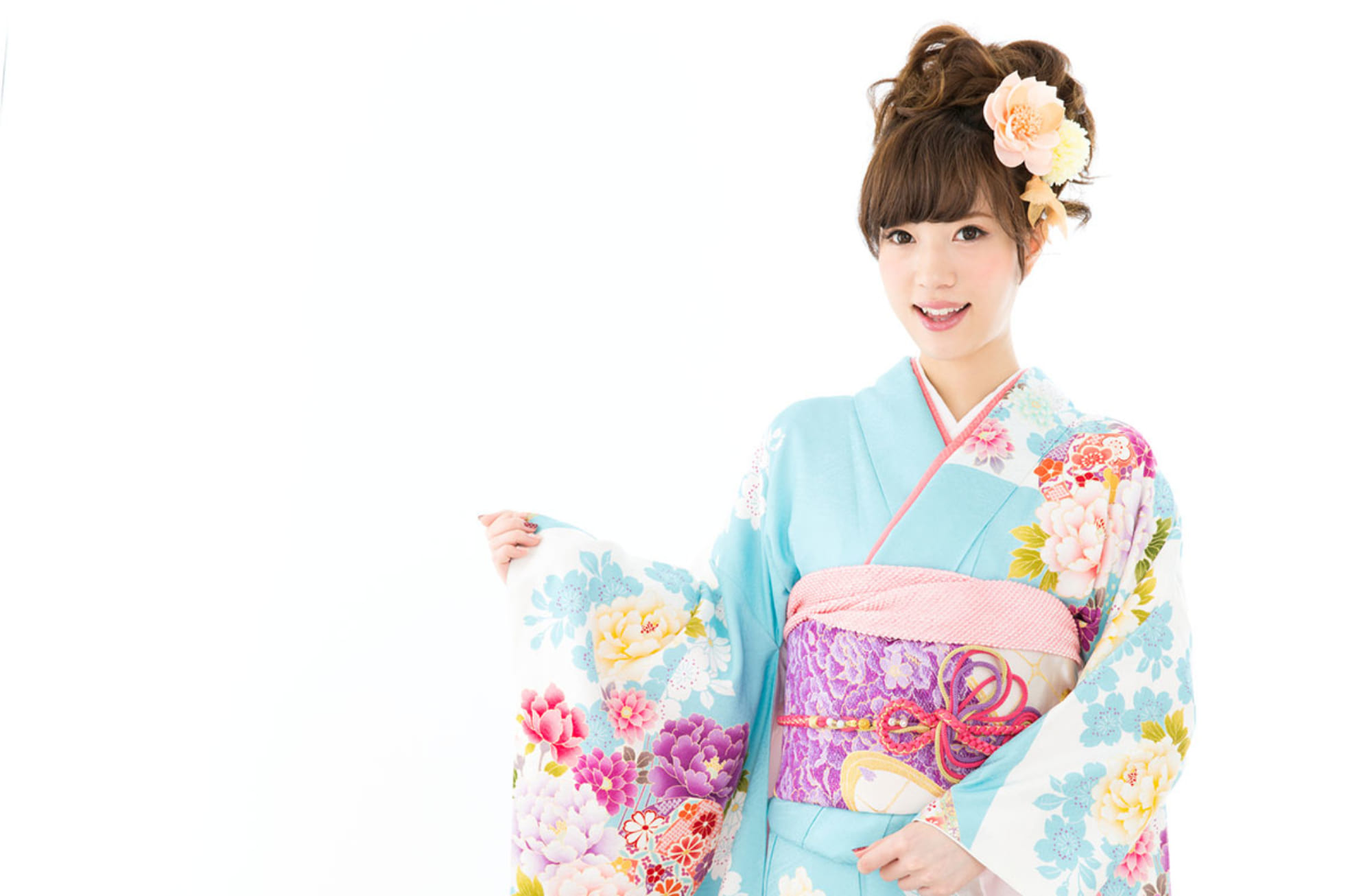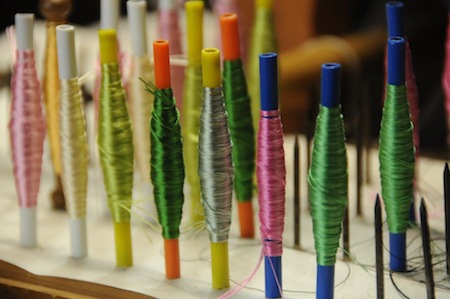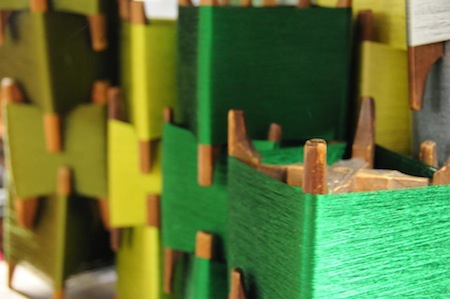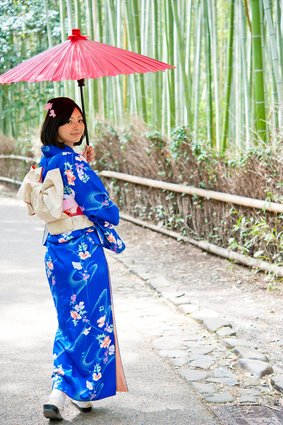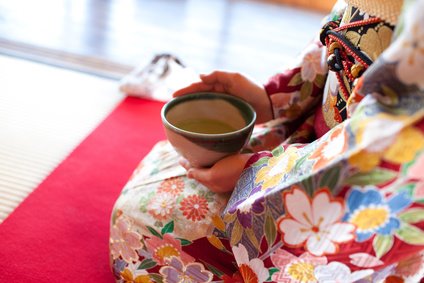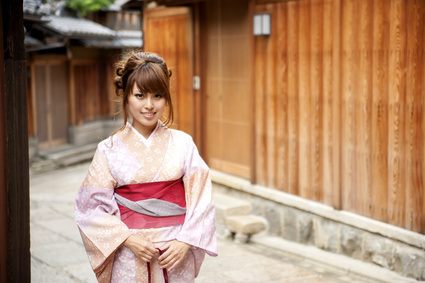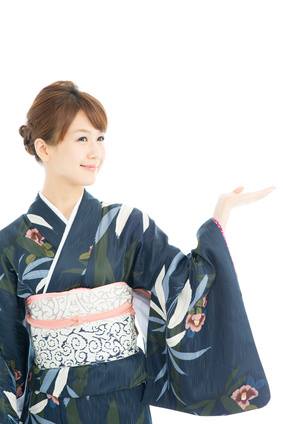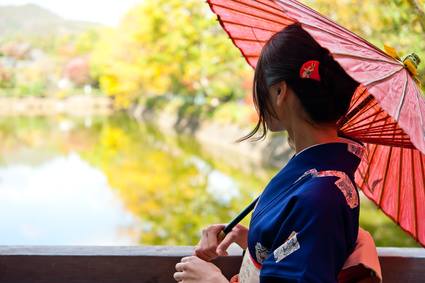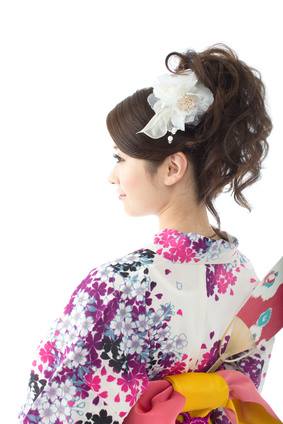For formal kimonos, you use fukuro obi (bag obi).
The length is over 4m, and normally you set it up as nijuutaiko (double taiko knot). You wear them with Furisode, and a gorgeous decorated knot is applied to match the gorgeous furisode.
Besides when you wear formal kimonos, Nagoya obi is frequently used, so there is a image of “fukuro obi=formal dress”, but there are also fukuro obis for casual occasions. Fukuro obi for formal dresses is defined as “obi with golden or silver strings woven into it”, but it is easy to distinguish them because formal fukuro obis are apparantly gorgeous.
It is not for formal use if only a small amount of golden or silver strings are used, or if it naturally matches with komon.
Obishin, which you insert inside the fukuroobi, is made from cotton or silk, but it is not that silk is finer in quality than cotton. The hardness differs, so you should choose depending on your liking. If it is a recycled item, sometimes the oboshin is not inserted because of the preference of the former user. If the material is solid enough, you can use it with no problem. If it is too soft to tie a knot, you can have a core inserted at a shop where they do make-overs.
